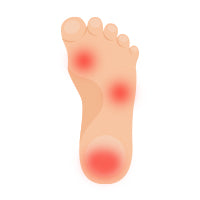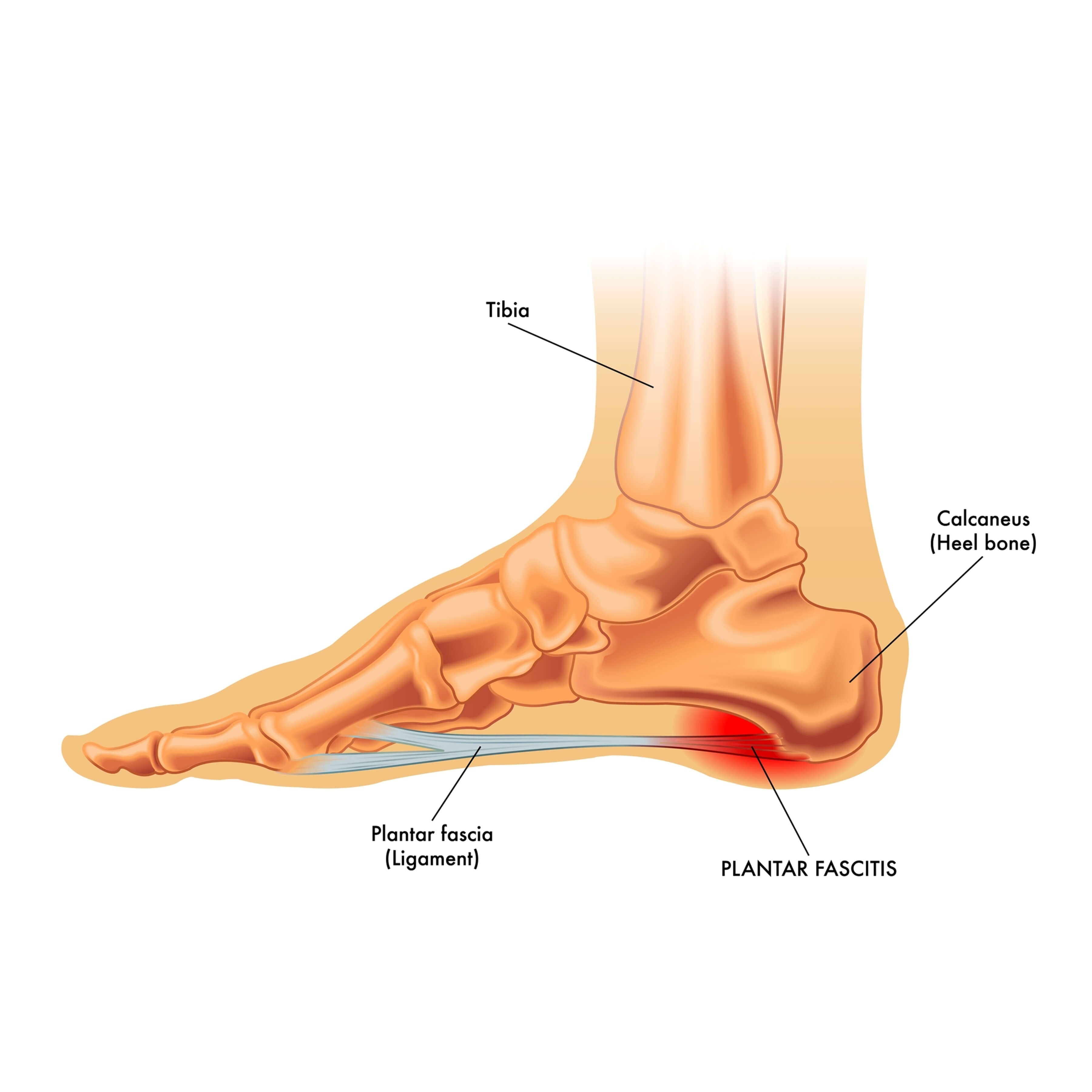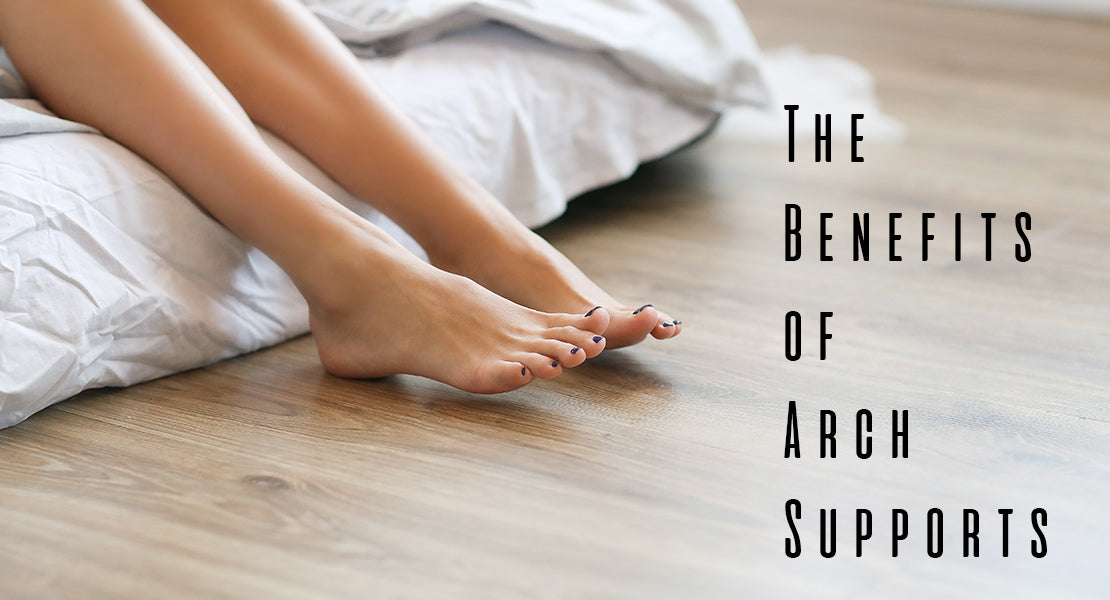What Are Arch Supports?
Arch support is a term used for a large variety of shoe inserts that help support the arches of the foot. This can have a very broad range of devices from a basic pad to a hard graphite custom-molded support. For most purposes, arch support is an insert that goes into your shoes and helps support the arches of your feet.
Importance of Arch Supports
The human foot is not adapted to walk on flat, hard surfaces. The majority of shoes provide only superficial support while also shielding the foot from dust and rain. Even so, these days, aesthetics matter more than practicality when picking out a pair of shoes.
When it comes to the vast majority of shoe companies, finding footwear with adequate support features is more of a niche market or anomaly when it should be a priority for people’s health. Arch supports are essential to keep a good posture and maintain a healthy lifestyle. Because of this, it is more crucial than ever to pick shoes with adequate arch and heel support. Physical therapy may also be useful for those with arch pain caused by overuse and strenuous physical activity.
Understanding Your Arch
In order to appreciate the value of insoles and arch supports, it can be instructive to get some familiarity with the foot's anatomy. Walking and running put a lot of strain on your feet; therefore, the arch was made to support your weight and cushion your steps.
While relatively modest in size, an arch is subjected to considerable stress. To run and walk with ease, you can thank your arches. Your arches aid in creating equilibrium and providing stability, particularly while traversing varied terrain.
To avoid injury, our feet were made to tread on forgiving surfaces like dirt and sand. Hard floors are difficult on the feet because they have no give and cause a lot of stress; thus, many people have pain, discomfort and foot problems due to the prevalence of hard surfaces.
Now, if your foot is missing the contouring support it once received from shoes, arch support may be the answer to avoid any injuries.
Types of Arches
Supporting your weight while you're upright is the work of arches in your feet. Likewise, they're crucial to your ability to go forward when you're on foot. Along with the rest of your bones, tendons, and ligaments, they help you spring forward as you walk, and there are different types of arches.
Normal Arch
A normal arch will support your body weight in a sufficient manner and will roll inward ever-so-slightly as you walk or run. In most cases, specialized arch support is not required. A shoe described as "neutral" is recommended for most occasions.
Flat Arch
Incomplete footprints (no "instep") indicate a flat arch or fallen arch. The excessive inward rolling of the foot (overpronation) caused by this arch is problematic for walking and running. The symptoms are pain in the ankles, knees, and hips that might originate in the feet due to a lack of arch support. If you need stabilizing arch support, the experts at Lucky Feet Shoes will help you find one that works for you.
High Arch
A high arch can cause muscle pain and joint tension all the way up the kinetic chain, not just in the feet. It's possible that your feet don't absorb shock very effectively, making it such that you get tired quickly when walking or running. Arch supports with extra padding may be suggested for people with high arches and are great for your muscles.
How Do Arch Supports Help Me?
Regardless of who you are, arch supports can help you. Here is what all arch supports do.
Benefits of Wearing Arch Supports:

- Arch supports help distribute pressure – Since the arch support is more contorted to your foot, you help eliminate the primary pressure points which are usually on the heel and ball of the foot. Arch supports help evenly distribute that pressure by putting some of that pressure into the arches of your feet versus leaving all the pressure in the heel and ball of the feet.

- Arch supports provide support – Most people feel like arch supports only support the feet. The reality is the feet are the foundation of our entire body. If you are lacking support in the foundation, it can affect your entire body. This is why arch supports are commonly used to help with knee, hip, and back-related alignment issues as well.

- Lessen or prevent pain – This is one of the main reasons why someone chooses to initially wear arch support as they are the most commonly prescribed non-invasive treatment for most foot ailments. Many foot problems are solved by wearing properly fitted footwear and arch supports. We will get into this in-depth later in the article. It also can relieve your knee pain as well as back pain.
- Arch supports to prevent your arches from harm – While most people choose to first wear a support based on an injury, trauma, or inflammation; arch supports can be tremendously beneficial in helping prevent harming the arches of your feet. One of the more commonly occurring issues is falling arches. Another common ailment is plantar fasciitis which can oftentimes be prevented by wearing arch supports. Ultimately, wearing support properly fitted for your footwear and feet can help you in numerous ways.
- Provide stability and balance – By filling the gaps in your arches, you give a more stable surface area for the feet which in turn, improves your stability and balance. You can see examples of how your balance is improved by sampling adding arch support here.
What are the best arch supports available?
One of the most common mistakes someone makes when choosing an arch support is assuming that one arch support will work in any type of shoe. This is a fallacy. Footwear varies widely from high-heeled pumps to ballet flats, to running shoes, to boots, and so on. The type of footwear you plan to wear is the first and most important consideration when choosing an arch support. Certain types of footwear don’t accommodate arch supports. Sandals and backless shoes generally need to have a built-in arch support rather than what is generally considered an arch support as pictured here. While there are numerous types of arch supports available, the three types listed below are the arch supports we have had the most success with.
1. LFS-1000 Premium Neutral Orthotic

2. Sovella S-3000/3500 Sport Neutral Orthotic

3. Sovella Dress Orthotic

4. Custom Molded Arch Supports
What Are Orthotics?

Things To Keep In Mind When Buying Insoles/Inserts & Orthotics
There are two primary considerations when choosing any type of insert or orthotic. The first consideration is the type of footwear you will wear. Many shoes do not accommodate a full-size insert. To accommodate a full-size insert, that shoe must have a removable insole. Many casual and dress shoes do not have removable inserts. Sandals, heels, and clogs generally will not accommodate any type of insert. Although most athletic shoes have removable inserts, many of those inserts are very thin, and replacing them with a full-size insert will cause the shoes not to fit anymore. This is why the first consideration should always be the type of footwear you plan to wear before selecting any insert or orthotic.
The second main consideration should be the overall use of the insert. If the insert or orthotic is to address a specific ailment, you should strongly consider only wearing footwear that supports the type of orthotic. Some orthotics that will be the best for you, will only work in certain shoes. This is why both must footwear and use must be considered before buying any insole, inserts, or orthotics. Another use of an orthotic could be for improved support. If your primary goal is to add support to your existing footwear, you should consider the footwear over the use in this situation.

- Sizing – Since there is a wide variance in sizing with footwear, the best option is to make sure you have orthotics when you are trying on the shoes you are looking to purchase. For example, if you wear a size 9.5, a size 9 or size 10 might fit best depending on the actual shoe. Another consideration with sizing is the overall width of the shoes. Many shoes have a narrow arch fit which makes orthotics difficult to fit. When the shoe is too narrow in the middle, that shoe is trying to support the arch with the upper of the shoe. Adding an arch support to this shoe will generally cause that shoe to be too tight and make the heel slip. You want to make sure the heel cup of the orthotics sits flat into the heel cup of the shoe, the arch fits nicely into the middle, and the toe extension fits into the forefoot of the shoes without folding up or pinching.
- Placement – You always want to place orthotics at the rear of the shoe with the heel cup seated flat on the inside heel of the shoe. The arch placement should start at the forward portion of your heel and should end just before the joint at your big toe. If the arch support also has metatarsal support, you want the metatarsal pad to sit just behind the bones in the ball of your foot. Correctly placed met pads will usually feel like a small ball in the middle of your foot. If the met pad is placed correctly and appropriately for your foot, that feeling will diminish over time.
- Your Arch Type – All feet fall within a range of three arch types. Those are the low arch, normal arch, and high arch foot. The low arch type is commonly referred to as a flat foot. The high arch type is also referred to as a cavus foot. An easy way to identify your arch type is to take a look at your bare footprint either in soft sand/dirt or on a dry surface after your foot is wet. The lower your arch, the more of your foot will make contact with the ground leaving a fuller imprint. A high arch foot will generally only show the heel and the ball of the foot with no part of the middle of the foot making an imprint. While the flat foot and the cavus foot are the types of feet that usually feel the most immediate relief from arch supports, the normal foot benefits as well. As we age, our tendons and ligaments begin to wear out and the arches of our feet have to work harder and harder. By wearing good arch support you can keep your feet and body supported which helps prevent many issues.

- Materials – Arch supports are made in a wide variety of materials. Most are made with a variety of types of plastics ranging from a hard molded support to a soft foam. There are hundreds of types of varieties used in the manufacture of arch supports. Two of the most popular used materials are EVA and Polyurethane. These are the same types of materials you will find in many running shoe midsoles. The reason why they are commonly used is that they have really good shock absorption and rebound properties. Both of these make for an instant comfort factor. Orthotics made from firmer plastic materials are usually used in the manufacturing of custom-molded orthotics. These orthotics are usually made to correct a foot condition and have maximum support. This is why the firm plastics need to be custom-molded for the individual by a specialist.

- Footbed Type – There are two main types of arch support footbeds. They are full length and ¾ length. A full length is designed to replace an existing insole in a pair of shoes. A ¾ length is designed to go on top of or under an existing footbed.
Knowing When You Need Arch Supports/Orthotics
There are many reasons why people need arch support/orthotics. Most people will go to a doctor with a foot ailment and they will recommend a new pair of support shoes and good arch support. When properly fitted and used, arch supports can be the best non-invasive treatment for many foot, knee, hip, and back issues.

- Plantar Fasciitis – This is one of the most common foot issues people deal with. Plantar Fasciitis is an inflammation of the Plantar Fascia of the foot. This can be caused by wearing poorly fitted shoes, shoes that are too worn, overuse, flattening feet, trauma, and numerous other reasons. The most common symptom of plantar fasciitis is heel pain when you first wake up in the morning or after being seated for a long period then standing up. While the pain is most common in the morning or after being seated, the inflammation is usually irritated because you are not supporting the arch of the foot. This is why arch supports are one of the best possible options for plantar fasciitis sufferers. By supporting the foot all day, you can help the inflammation heal. This is why so many sufferers of Plantar Fasciitis find relief by using orthotics.

- Arch Pain – If you are experiencing arch pain, it may be time to start wearing arch supports. Arch pain can be due to underlying problems, or from excessive activity. Arch supports will benefit your feet and whole body, in the long run. We sincerely recommend wearing arch supports as the first sign of arch pain.

- Over-Pronation – Overpronation is when your ankles tend to roll inward while walking. If you notice this or have been diagnosed with overpronation, an insert orthotic will help to keep your ankle and body aligned properly.
- Supination – Supination is the motion of your foot rolling outward when you walk. If you supinate when walking, orthotics will help to keep your feet and body aligned.
- Standing For Long Periods – If you have an occupation where you are on your feet all the time, you should consider wearing orthotics in your shoes at all times. Wearing insoles will help prevent the occurrence of a more serious foot problem later on even if you stand up all day.

- Heel Spurs – A heel spur feels like a hard rock in your heel. If you suffer or are at risk of getting a heel spur an orthotic will help to alleviate the pain that comes with a heel spur. Orthotics help to evenly distribute pressure and doing this will also help to lower your risk of the heel spur getting larger and more painful.

-
Morton’s Neuroma – Orthotics are especially beneficial to someone with Morton’s Neuroma because an orthotic with a met pad helps to alleviate the pressure and pain between and around the toe area.
- The effects of Diabetes on the feet is another reason one might need orthotics/arch supports. Diabetes may cause pain and swelling, arch supports/orthotics will help keep the feet and body aligned and evenly distribute that pressure.
- The effect Arthritis can have on the body and the feet can vary widely from person to person. Some people with Arthritis have no problems with pain in their feet, knees, hips, or back while others have extreme issues which require a high level of care. Arch supports/orthotics will help keep the feet and body aligned and evenly distribute that pressure associated with Arthritis
- Running causes extreme wear on the knee, joints, and hips. Wearing an arch support and/or an orthotic will alleviate the pressure on the impacted areas and will also redistribute the pressure because the body is better aligned with an arch support.
- Metatarsalgia is a condition in which the ball of your foot becomes painful and inflamed. It is commonly associated with sports and active activities that involve running and jumping. There are other causes as well, including foot deformities and shoes that are too tight or too loose. Wearing an arch support and/or an orthotic will alleviate the pressure on the impacted areas and will also redistribute the pressure because the body is better aligned with an arch support. Arch supports can be modified with a met-pad that will help to even further reduce the pressure. Some arch supports come with a built-in met-pad, for those who prefer the option to remove as needed, a modification might be the best solution. Lucky Feet shoes offer modifications in-store for arch supports and footwear.
-
Visiting an Orthotic Specialist – We highly recommend visiting one of our Shoe Fitting Specialist in 1 of our 9 Southern CA locations! Having someone fit you to the orthotic that will fit your needs will help to keep your body happy and healthy!
Types of Arch Supports
Athletic & Sports causes extreme wear on the knee, joints, and hips. Wearing an arch support and/or an orthotic will alleviate the pressure on the impacted areas and will also redistribute the pressure because the body is better aligned with an arch support. There are arch supports that are specifically designed to absorb shock, sweat, and impact. Ask your local Lucky Feet Shoes specialist about the best arch support for your athletic activities.
- Gel – Gel Arch Pads support the arch, reducing pronation and arch pain. The soft cushions adhere directly to the foot, alleviating pain caused by fallen arches, weak arches, flat feet, and pronation-related foot problems. The best thing about Gel Arch Pads is that they're reusable because the adhesive does not wear out after one use. It's re-activated every time the pads are hand-washed with mild soap and water.
- Heat Moldable – Heat moldable arch supports mold to the foot using heat. These are made from materials designed to withstand heat and contour the foot.
-
Warm/Wool – Wool insoles are designed to provide additional insulation in cold-weather shoes such as boots, shoes, and slippers. In addition to support, these additions provide warmth. Materials that may be used in warm and wool arch support may be:
- Shearling lambskin wool
- Angora
- Merino Wool
- Heavy Duty – Heavy-Duty Arch supports are designed for men and women over 200 pounds who suffer from lower back pain and foot & leg fatigue from being on their feet.
- Memory Foam – Memory foam orthotics are thick and full length. Usually, they will fit best into a shoe with a removable insole.
- High Heel – Many times high heels and dress shoes can cause pain. Dress arch supports are specifically made for high heels. It is still just as important to support the arch in heels. Ask your local Lucky Feet Shoes fit expert about the best options for your fancier favorites.
- Kids Insoles – It is common for children to experience foot pain. Recognizing foot problems early on can prevent even more painful foot problems down the line. Arch supports are not only for adults. Children experiencing supination, foot pain, and over-pronation will benefit from wearing arch supports.
-
Sandals and other footwear – Want to wear sandals but need support? Some arch supports and orthotics are thin enough to be worn in sandals. Another option would be to find a sandal with built-in arch support such as Aetrex or Sovella.
Frequently Asked Questions
Orthotics for a running or walking shoe can be a full length or a ¾ length. As long as the insole is removable, a full-length orthotic will fit right in.
Orthotics for a running or walking shoe can be a full length or a ¾ length. As long as the insole is removable, a full-length orthotic will fit right in.

Jerick Sobie
Since 2005, I have been a dedicated small business owner specializing in footwear retail. With over 20 years of experience, my business partner and I have helped customers find the perfect shoes that combine style, comfort, and quality. Our expertise extends beyond local sourcing—we have traveled internationally to discover high-quality footwear that meets our customers’ needs. In addition to running my business, I have participated in numerous health fairs and educational seminars, sharing my knowledge on proper footwear and foot health. Committed to providing exceptional service, We carefully curate our selections to ensure the best fit and support for every customer.






















